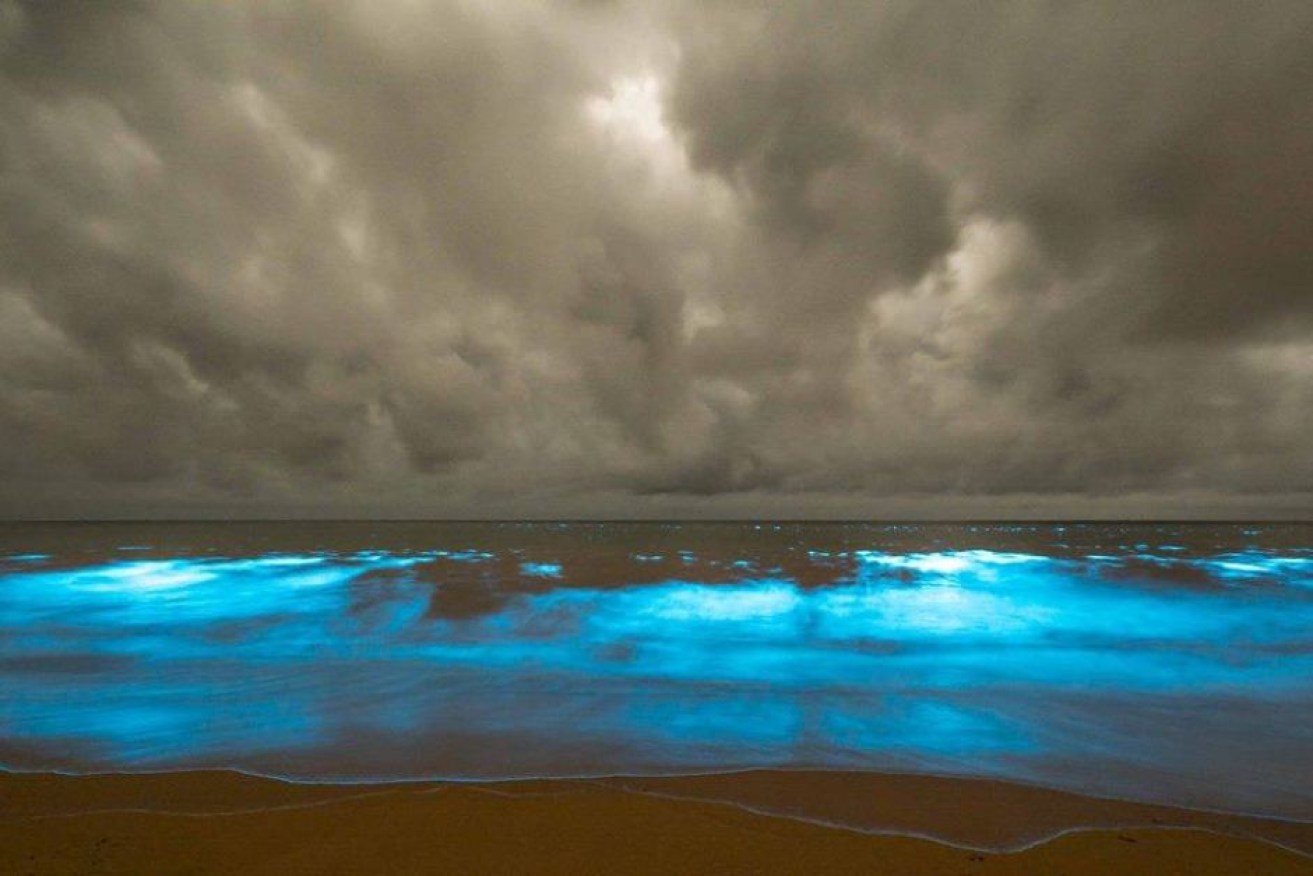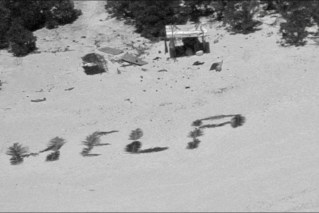Bioluminescence dazzles beachgoers at Tasmania’s Preservation Bay

The bright blue glow is caused by billions of single-celled plant plankton which illuminate when disturbed. Photo: Facebook: Brett Chatwin
Beachgoers in Tasmania have been sharing incredible images of a bioluminescence event at Preservation Bay on the state’s north-west coast.
The bright blue glow is caused by billions of single-celled algae or plant plankton called Noctiluca scintillans, and more commonly known as sea sparkle.
When disturbed by waves or currents, the tiny cells flash causing an illumination in the water around them.
Gustaaf Hallegraeff, a professor in aquatic botany at the University of Tasmania, said scientists believe the flashing mechanism is deployed to scare off predators.
“Imagine there’s a little animal that wants to eat this plankton and suddenly it flashes at you,” he said.
“There’s actually evidence that shows if you offer an animal a choice between a luminescent plankton and a non-luminescent plankton, they avoid the luminescent one.”
Professor Hallegraeff said while the phenomenon was not harmful to humans, there were still threats associated with it.
“This is an organism that eats other species and so if there’s a huge amount of it, and basically it behaves like a vacuum cleaner and it eats away all the other plankton.
“So we have heard for example, on the east coast [of Tasmania] complaints from shellfish farmers that after this noctilucal bloom went through, suddenly the shellfish were hungry because there was nothing left to eat.”
The wonders of nature
Professor Hallegraeff said the phenomenon was first reported in Sydney Harbour in 1860 but it has expanded a great deal since then.
“In the 2000s we saw it really move southwards and now it’s here permanently in Tasmania,” he said.
“We have some evidence that ocean currents and the warming of the oceans have contributed to it – it’s definitely a species that is showing a spectacular range expansion in the last 20 years.”
Professor Hallegraeff said he would support the idea of turning these bioluminescence events into a small tourist industry for Tasmania.
“It exposes people to the wonder of nature and they should be able to enjoy that – it’s spectacular.”
-ABC








